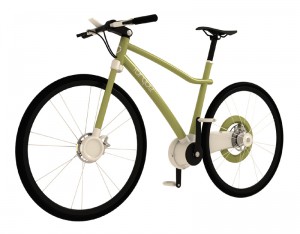 A month or so ago, I posted about a handcycle by Marius Hjelmervik, a design student at Aarhus School of Architecture in Denmark. It turns out that Marius wasn’t the only one in his class to design a bike. For his final project, classmate Emil Møller Pedersen designed an electric bike called the Torque. Emil pointed out that many electric bikes today are essentially standard bikes with a battery and motor installed, so his concept was to explore what a newly designed electric bike might look like just a few years from now.
A month or so ago, I posted about a handcycle by Marius Hjelmervik, a design student at Aarhus School of Architecture in Denmark. It turns out that Marius wasn’t the only one in his class to design a bike. For his final project, classmate Emil Møller Pedersen designed an electric bike called the Torque. Emil pointed out that many electric bikes today are essentially standard bikes with a battery and motor installed, so his concept was to explore what a newly designed electric bike might look like just a few years from now.
Here is what Emil had to say about his concept e-bike (slightly paraphrased):
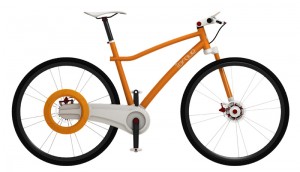 “With my project ‘Future (e) Bike’ it has been my goal to make an electric bicycle that can get more people to ditch the car in favor of electric bicycle. To do so I have been focusing on a younger group of users than those who use electric bicycles today, at least in Denmark where mostly elderly people ride electric bikes.
“With my project ‘Future (e) Bike’ it has been my goal to make an electric bicycle that can get more people to ditch the car in favor of electric bicycle. To do so I have been focusing on a younger group of users than those who use electric bicycles today, at least in Denmark where mostly elderly people ride electric bikes.
The objective of my project is to make a concept on how a future electric bicycle (2015) might look like. The bike should be realistic. That means no hubless wheels with nano magnetic levitation or whatever it is called. The electric bicycles available today are largely conventional bikes with a battery and a motor installed, but what would an electric bicycle look if you think of it as an e-bike from the beginning?
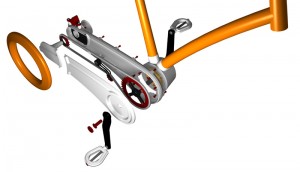 The concept aims to bring all technologies on the electric bike together in a single unit on the bike. This will give the electric bicycle a visual simplicity and ensure that it stands out from a conventional bike. All the extra weight is placed very low on the bike, resulting in a low center of gravity and a bike that is very stable.
The concept aims to bring all technologies on the electric bike together in a single unit on the bike. This will give the electric bicycle a visual simplicity and ensure that it stands out from a conventional bike. All the extra weight is placed very low on the bike, resulting in a low center of gravity and a bike that is very stable.
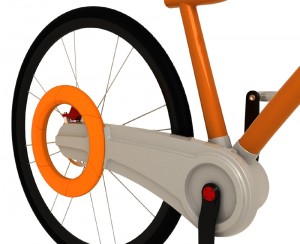 The most important parts of the bike are the battery-ring and the closed chain box. These parts are what make the Torque different than other electric bikes. The battery-ring is intended as the icon of the electric bicycle and what makes it stand out from a conventional bike. The frame is simple and ‘bike-like’. Even though it is electric it should still look like a bicycle!
The most important parts of the bike are the battery-ring and the closed chain box. These parts are what make the Torque different than other electric bikes. The battery-ring is intended as the icon of the electric bicycle and what makes it stand out from a conventional bike. The frame is simple and ‘bike-like’. Even though it is electric it should still look like a bicycle!
The chain box houses the chain, an automatic chain tensioner, the electric motor, and most of the wiring (keeping it all clean and dry). The motor is based on the European standard, which states that the motor will only help when the rider is pedaling, and only up to 25 km/h (15.5 mph).
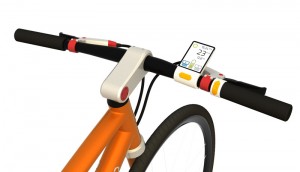 The bicycle computer on Torque is where the user is able to check the battery life and change gears, in addition to normal cycling computer functions.”
The bicycle computer on Torque is where the user is able to check the battery life and change gears, in addition to normal cycling computer functions.”

Leave a Reply to Ross Nicholson Cancel reply